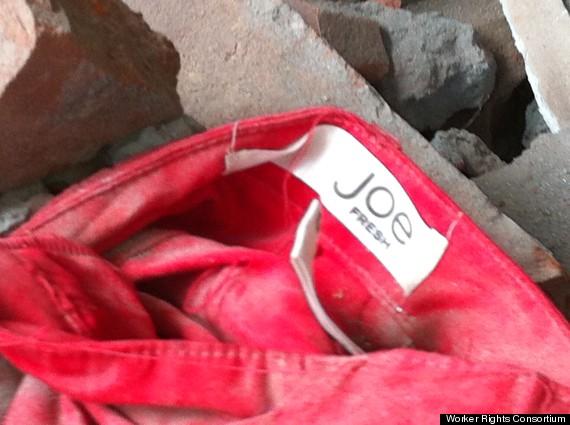
In light of the building collapse in Bangladesh this week that has killed over 300 workers (as of the latest estimate), I've been compelled to take a closer look at what is hanging in my closet. I'm sure many others have as well. But where to begin?
It's been my experience that, when stories like this hit the headlines, there is a real outcry for change which is fantastic, but we tend to either forget about the issue when it's no longer on the nightly news, or else we simply give up because we don't know how to become more informed about making ethical shopping choices. So here are a few ideas on how you can not only become informed, but actually take some simple steps toward change in your own life.
Take an inventory
If you're like me, you probably haven't got a clue as to where most of the clothes hanging in your closet come from. Here's your chance to get more familiar with that favourite shirt or comfy pair of shoes. I just finished my inventory and was pretty surprised by what I discovered. Aside from the fact that I have an obscene amount of clothing (that's a post for another day), the diversity of where my clothes come from was shocking. Here's the breakdown of shirts, pants, jackets and shoes in order of country of origin:
China: 31
Bangladesh: 9
Indonesia: 5
Cambodia, Canada, Guatemala: 4
Haiti, Mexico, Vietnam: 3
India, Sri Lanka, Thailand: 2
Bulgaria, Columbia, Dominican Republic, Egypt, El Salvador, Honduras, Laos, Lebanon, Lesotho, Macau, Nepal, Philippines, Singapore, Taiwan, Tanzania, USA: 1
Unknown/Missing label: 5
Shocking, isn't it? A grand total of 5 items made in North America and zero from Europe. It's a real indication of where labour is cheap and where people are willing to work in less than ideal conditions in order to put food on the table. Now, just because an item is manufactured in a developing country doesn't necessarily mean it's been produced in a sweatshop, however, the odds of that being the case are greatly increased. That being said, we don't want to take jobs away from those who desperately need them so it doesn't make a lot of sense to simply boycott products from a particular country. Ultimately, it comes down to the manufacturer, not the country. This is where point two comes into play.
Do your research
Unfortunately, not all companies are especially concerned with the conditions their employees or the employees of their contracted partners work in. It's tough to know exactly what has been produced ethically and what hasn't so a little outside help is required to make informed decisions. Thankfully, there are a number of great websites available that have done the research for you, making it easier than ever to figure out what companies and products you should avoid and which ones you should support. Here are the ones I've begun visiting regularly:
Ethical Consumer
Fairtrade Canada
GoodGuide
KnowMore
Rank-A-Brand
GoodGuide is the site I find most helpful and extensive. You can search by brand or by product type, and it covers far more than just clothing. They also have a mobile app available for iPhone/iPad and Android with a built in barcode scanner that will tell you instantly about the ethical properties of the particular item you are considering. Once you start checking out the ethics of some of your favourite brands you'll be amazed. A little tip for you...the more "exclusive" the brand, the less they are concerned about how their clothes are being made. Ralph Lauren ain't such a nice guy after all.
Buy less, buy better
This is a tough one because we all want a good deal. In fact, many of us will automatically reach for the most economical item because we figure saving money is a good thing, and by saving money, we have more available to give away to those in need. Makes sense, right? Unfortunately, if the deal is too good to be true, it probably is. Not in all cases, but often, if the price of an item makes you think, "how can they possibly sell that so cheap?" then there's a good chance that either some form of forced labour or perhaps a practice dangerous to the environment was involved. Cheap items don't necessarily come cheap. We just don't know the real costs involved. Sometimes it makes far more sense to buy the more expensive, quality item (after doing your research) then decide to simply buy fewer items. The better quality item should last longer, you'll feel great wearing it, and you just might improve a life somewhere in the developing world. Now that's a great deal!
I'm no expert at any of this stuff but I do know that I have a responsibility to consider others when I'm making a purchase. Based on how full my closet is right now, I won't be needing to make a clothing purchase for quite a while. When I do though, you can be sure I'll be looking at the tag to find out where it was produced and then doing some research on the brand before I lay down my cash.
If we all start making ethical choices when it comes to our shopping and if we all begin voting with our wallets, the corporations who endanger lives in the name of making higher profits will have no choice but to pay attention. When it comes to big business, money talks. So let's make sure our dollars are yelling loud and clear: the time for turning a blind eye is passed!